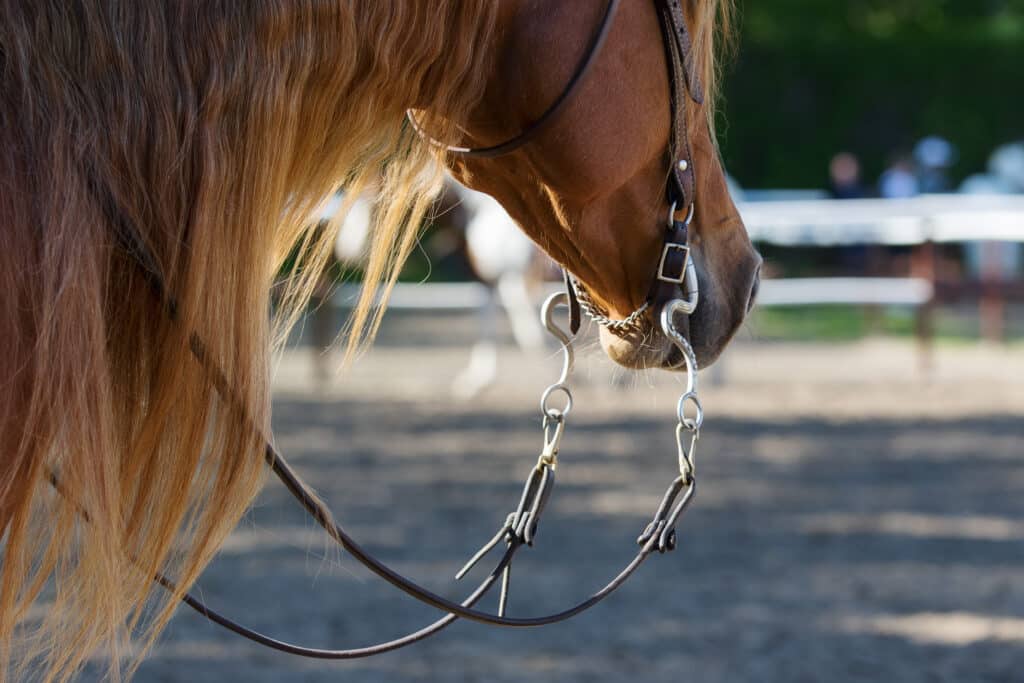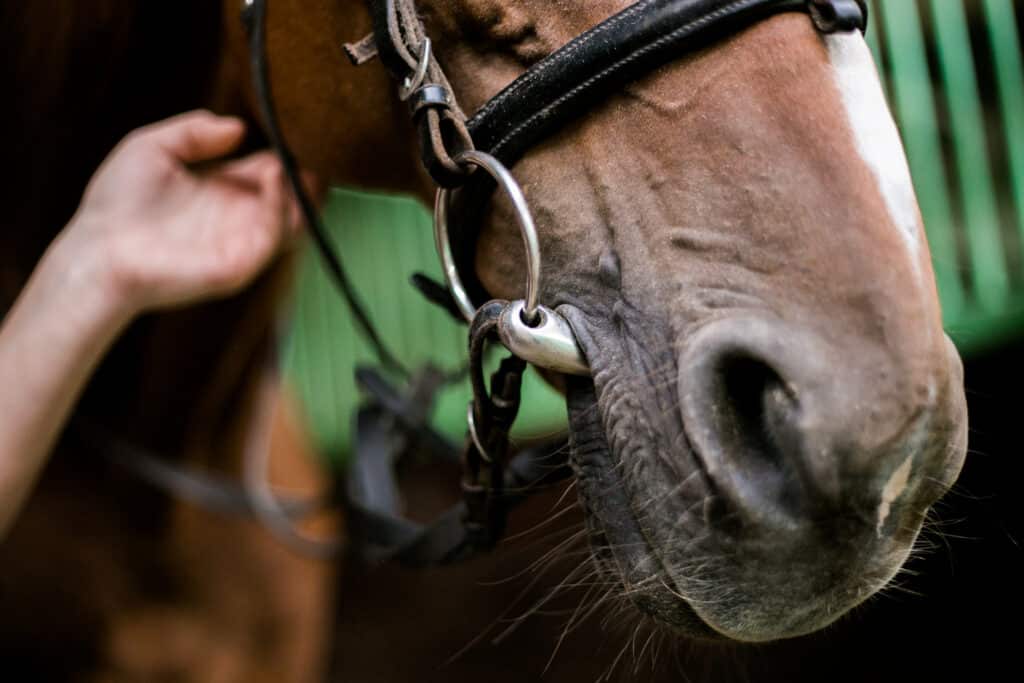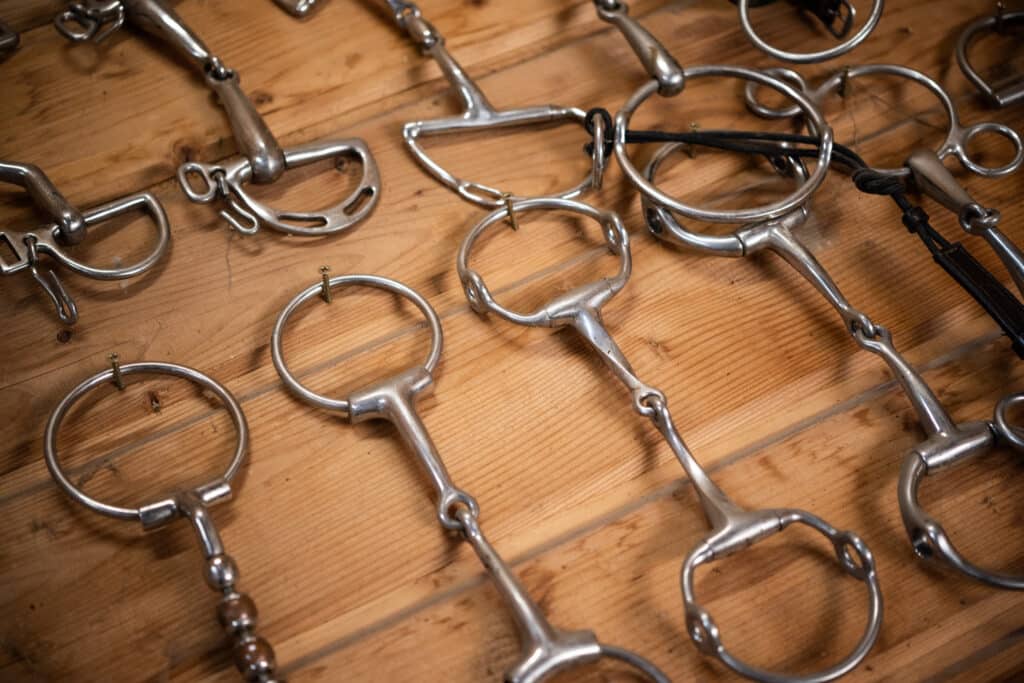5 Types of Horse Bits Every Rider Should Know
When it comes to riding and training, the bit is one of the most important tools you’ll use to communicate with your horse. With so many designs available, it can be overwhelming to choose the right one. Understanding the different types of horse bits and how they function is the first step toward making an informed decision that supports both effective riding and your horse’s comfort. There are two parts to deciding about bits – the cheek pieces, and the mouthpiece. Typically, we like to say that the rider chooses the cheek piece, and the horse chooses what works best in his mouth. To see our current selection of horse bits, click here!

Snaffle Bits: Simple and Effective
Let’s break down the different types of horse bits. Snaffle bits are the most common and widely recognized. They apply direct pressure, meaning the reins attach directly to the bit without leverage. Pressure is placed on the horse’s tongue, lips, and bars of the mouth, encouraging a soft response. There are several popular snaffle cheek piece variations:
- Loose-ring snaffle: Encourages movement of the bit in the horse’s mouth, promoting relaxation.
- D-ring snaffle: Provides more stability and prevents the bit from sliding through the horse’s mouth.
- Full cheek Snaffle: provide enhanced lateral control and steering for young or inexperienced horses by creating more pressure on the horse’s cheeks to guide turns. The extended side bars prevent the bit from sliding through the horse’s mouth, ensuring it stays in position and delivers more precise rein aids. This cheek piece is particularly helpful for horses that have difficulty responding to direct rein pressure or use head-tipping as an evasion.
- Eggbutt snaffle: A comfortable option that reduces pinching at the corners of the
- lips.
Snaffles are often recommended for young horses or those still in training, as they encourage clear, gentle communication. They can come in a single joint mouthpiece, a double joint mouthpiece, or a mullenmouth (no joint).
Curb Bits: Adding Leverage
Curb bits introduce leverage, which multiples the rein pressure through the shanks of the bit. When used, pressure is distributed not only to the horse’s mouth but also to the poll and chin groove via a curb chain or strap.
These bits are more commonly used in Western riding and in advanced English disciplines. They allow for refined cues but require educated hands. Riders must understand how much leverage they’re applying to avoid causing discomfort when choosing between different types of horse bits.

Pelham Bits: Versatility in One Design
A Pelham combines the features of a snaffle and a curb. It has two rein attachments: one for direct pressure (life a snaffle) and one for leverage (like a curb). This gives the rider flexibility in adjusting how they communicate with their horse.
Pelhams are often seen in eventing, polo, and other disciplines that demand precision and adaptability. They can be used with two reins or with converters that allow the rider to manage both functions with a single rein.
Gag Bits: Stronger Action for Specific Needs
Gag bits are designed for horses that tend to lean on the bit or require additional lift at higher speeds. The reins attach in a way that slides the bit upward in the horse’s mouth, creating increased poll pressure.
Because of their strength, gag bits are usually reserved for experienced riders and horses. They are often used in fast paced disciplines like show jumping or cross country, where extra control may be needed.

Specialty Bits: Solutions for Unique Horses
Not every horse responds well to standard designs, which is why specialty bits exist:
- Hackamore: Works entirely outside the mouth, applying pressure to the nose and chin. Useful for sensitive mouthed horses.
- Mullen mouth: A solid, slightly curved mouthpiece that distributes pressure evenly and is gentler on sensitive horses.
- Correctional bits: Include ports or rollers to relieve tongue pressure or encourage salivation.
These options can help solve specific issues but should be chosen with guidance from a trainer or bit specialist when considering types of horse bits.
Choosing the Right Bit for Your Horse
With so many types of horse bits available, how do you know which one is best? Consider:
- Your horse’s training level: Young or green horses often do best with a snaffle.
- Discipline: Western riders may prefer curb bits, while English riders often use snaffles or Pelhams.
- Temperament: Sensitive horses may need softer designs, while stronger horses may require more control.
- Your skill as a rider: The more leverage a bit has, the more responsibility it places on your hands.
Whenever possible, try new bits under the supervision of a trainer who can evaluate your horse’s response. Comfort and clear communication should always come first.

Common Mistakes to Avoid
- Switching bits too often: Sometimes problems stem from training, not the equipment.
- Ignoring fit: A poorly fitted bit can cause pinching, discomfort, or resistance. This is important to watch for when considering types of horse bits.
- Overestimating control: Stronger bits don’t automatically solve behavioral issues; they can sometimes make them worse.
Types of Horse Bits: Not a One Size Fits All
Exploring the many types of horse bits is part of becoming a more knowledgeable rider. From the straightforward snaffle to the specialized gag or hackamore, each has a place in equestrian training. The goal is not to find the “strongest” bit but the one that best balances your horse’s comfort with your riding needs. With the right choice, you’ll improve communication, build trust, and enjoy a more harmonious partnership with your horse.
At The Trainer’s Loft, our knowledgeable team is always happy to help you explore bit options, whether you stop by the store or give us a call. We will work with you to find the right fit for your horse and your riding goals.


